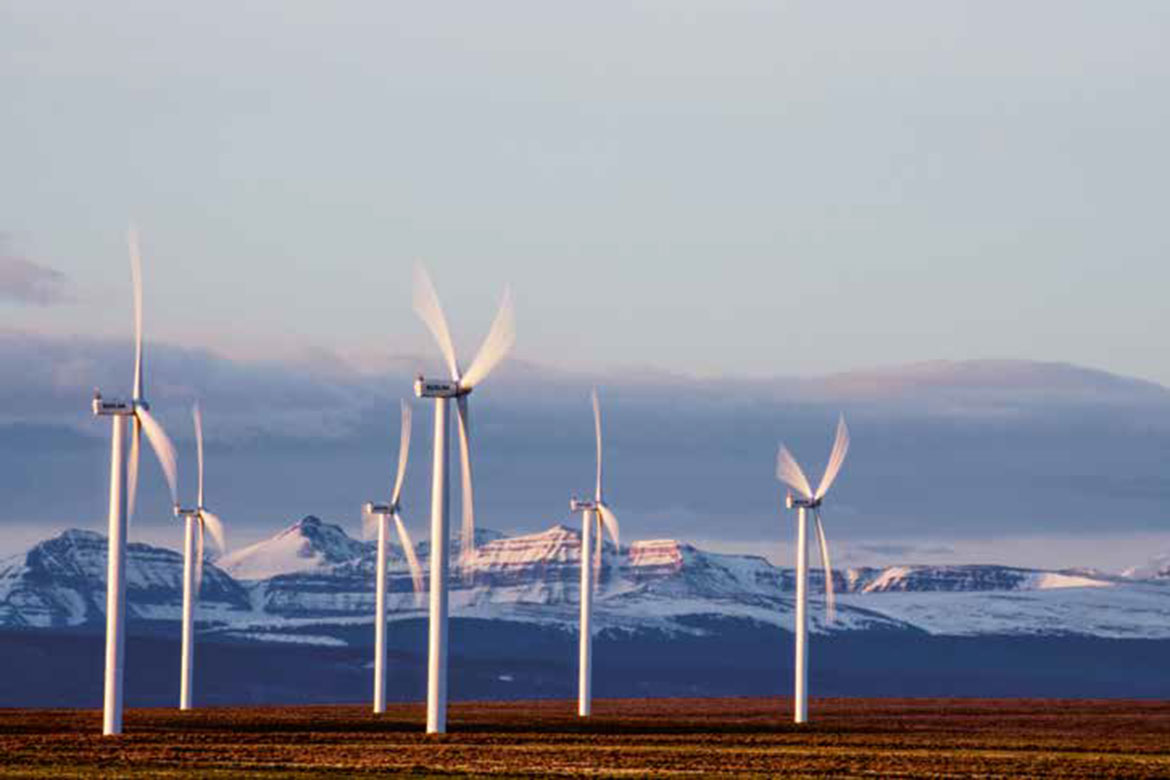Computer simulations optimise inefficient wind farms
At present, many of the big wind farms aren’t working at full capacity. Researchers are trying to improve how they’re built.

In Wyoming, as everywhere else, the ideal distance between towers when facing the wind is eight times their height. Image: Keystone/Aurora/Chris Noble
Up to now, expanding the use of wind power has meant just two things: making the turbines taller, and building more of them. In some places, like in China on the edge of the Gobi Desert, or in Wyoming in the USA, you can see a thousand or more wind turbines in endless rows stretching across the landscape. Given the constant increase in their overall capacity, one thing has been somewhat forgotten: on the whole, these mega-parks are actually running at far from full capacity. The turbines at the front create eddies in the air; according to the direction of the wind, this means they can block the turbines standing behind them, reducing their performance. Experts think that these losses could be as much as 40 percent. Michael Lehning at EPFL believes that these estimates might well be accurate.
So there’s immense potential for optimising the performance of the big wind farms. Scientists in Europe and the USA are looking for solutions. They want to be able to design new farms that can run to their true capacity, and they also want to manage existing wind farms better. Current simulations by Swiss researchers led by Varun Sharma at EPFL are now providing ideas about how to make turbines run more efficiently. “The decisive factor seems to be the distance between the turbines facing the wind”. He has calculated the ideal distance between turbines for a model farm similar to those built offshore or on a level plane of land. It has led him to come up with a simple rule: eight times the height of the tower. What’s interesting is that the lateral distance between the turbines is less critical.
Drones in the wind farms
In order to calculate wind, turbulence (the most important factor) and its impact on the other turbines on a wind farm, you need to solve flow equations. In theory, this would allow you to describe precisely how the wind flows at any point in a real environment. However, it would require an immense computing effort. Even today’s super-computers can only calculate wind conditions within the space of a few metres.
So there’s no getting around the need to simplify things. Often, industrial simulations will resort to just the mean-flow. It saves computing time but is less precise, and researchers have long been calling for more detailed analyses. At present, only the large eddies are calculated exactly. “Large-eddy simulations are a kind of compromise”, says Lehning. This involves simplifying the turbine geometry (after all, wind turbines are ultimately just sheets of turning metal that cause turbulent flows). They then divide up the wind park into a grid, and the finer structures inside the grid blocks can be determined by tests in a wind tunnel.
In order to get even more realistic figures, Balaji Subramanian from ETH Zurich has developed a drone that he flies through wind farms. It uses different aerodynamic sensors to carry out direct 3D flow measurements. Such data enables the model to be simplified even further. The next step is to develop an ideal site design for a large-scale wind farm, using simulations for different wind flows and the range of requirements that suit day-time and night-time use.
But what about existing wind farms? They already often suffer from the different airflows that occur during the day and at night, because large wind farms alter the dynamics in the atmosphere. During the night, 100-metre-high bands of moving air can be pushed farther up in the atmosphere by the wind farms. As a result, there is a drastic drop in turbine performance. Here, too, simulations show that these losses can be kept considerably in check if one turns off individual turbines – such as every second one. These new simulations reveal much potential for further optimisation.
Hubert Filser writes regularly for the Süddeutsche Zeitung and works for the TV show Quarks & Co. He lives in Munich.
V. Sharma et al.: Evolution of flow characteristics through finite-sized wind farms and influence of turbine arrangement. Renewable Energy (2017)




